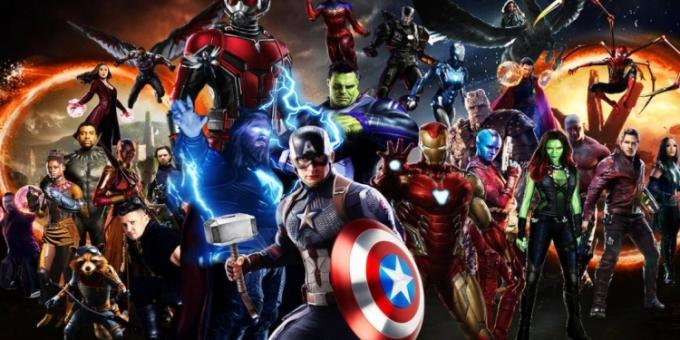Intertextuality is a linguistic resource that makes the dialogue between two or more works using a source text as a reference.
An author uses an intertextual resource when he brings elements from other works into his, establishing a relationship between them.
Intertextual resources do not only happen between texts, it is very common to find them in music, commercials, movies, paintings and cartoons.
When an image is built having another as a reference, we verify the use of an intertextual resource, for example.
 Botero's Mona Lisa (right) was inspired by Leonardo da Vinci's Mona Lisa (left).
Botero's Mona Lisa (right) was inspired by Leonardo da Vinci's Mona Lisa (left).
Intertextuality can be implicit or explicit
This linguistic resource can be classified in two ways according to the sharpness with which they are presented:
Explicit Intertextuality
Intertextuality is explicit when the reference to the source text is clear and easy to understand, with no need for specific prior knowledge on the part of the reader.
Implied Intertextuality
Implied intertextuality is less evident, it is not so easy to identify it and requires prior knowledge from the reader. If this person does not know the work being referenced, the understanding of the meaning may be compromised.
Especially in the case of implicit intertextuality, the comprehension of the works will be greater the greater the knowledge of the world and the reader's reading repertoire and knowledge.
What are the most common types of intertextuality?
Quote
Citation happens when an author's ideas are brought into another work. Quotations can be direct, when they are copied and pasted from the original text, or indirect, when they are rewritten in other words.
Citations are very common in academic works, such as monographs, dissertations and theses, and must always indicate the name of the author of the idea.
When education is not liberating, the dream of the oppressed is to be the oppressor. (Paulo Freire)
Parody
Parody is an intertextual device, often used for comic purposes. Parody subverts a text, music or any other type of work, giving it a new meaning.
We can cite as an example the song "Mulheres" by Doralyce Gonzaga and Silvia Duffrayer, which is a reinterpretation of the song "Mulheres" by Martinho da Vila.
Women - Doralyce Gonzaga and Silvia Duffrayer
We are Women of all colors
of various ages, of many loves
I remember Dandara, cool woman I know
By Elza Soares, a woman outlaw
I remember Anastasia, Valente, warrior
From Chica da Silva, every Brazilian woman
Growing up oppressed by patriarchy, my body
My rules
Now the picture has changedWomen head and very balanced
Nobody's confused, I didn't ask you anything
are they for them
Listen to this samba I'll sing you
Women - Martinho da Vila
I've had women of all colors
of various ages, of many loves
With some, I stayed
For others I just gave myself a littleI've had naughty type women
The shy kind, the lived kind
married needy, happy single
I've had a maiden and even a harlotHead and unbalanced women
Confused women of war and peace
But none of them made me so happy
how do you make me
Paraphrase
Paraphrasing happens when an author rewrites another's idea in his own words, without altering the meaning of the message. The idea is the same, but the structure and words can be different.
The difference between a paraphrase and an indirect citation is that in the citation reference must be made to the source text, in the paraphrase there is no such need.
I don't argue
with fate
what to paint
I sign. (Paul Leminski)
We can paraphrase this haiku by Paulo Leminski as follows:
Paulo Leminski said that with fate, he doesn't argue. What to paint, he signs.
Allusion
The allusion is a mention of elements from another text. It is an intertextuality that happens in an indirect and subtle way and may not be understood by the reader if he does not know the reference, see the following sentence:
After all, did you or didn't you?
For the reader who is not familiar with the book Dom Casmurro, this phrase may seem meaningless and without context. However, for those who know this famous work by Machado de Assis, the allusion is obvious.
Translation
Translation is considered an intertextuality, because to translate a text it is necessary to interpret and rewrite it in the closest way to what the author intended. This means that translating a work is not just rewriting it in another language.
If you can dream it, you can do it. (Walt Disney)
If you can dream it, you can do it.
crossover
O crossover it is the encounter or dialogue of characters from different fictional universes. One of the examples is the film Os Avengers, which brings together superheroes from different narratives.

Title
The epigraph is an excerpt from a text placed at the beginning of a work and which serves as an introductory element, as it dialogues with the content that will be presented below.
A work dealing with class struggle, for example, could use a quote from Karl Marx in its epigraph:
It is not man's conscience that determines his being, but, on the contrary, his social being that determines his conscience.
What is the relationship between interdiscursiveness and intertextuality?
Intertextuality is on the material plane, it happens between two works that have already been made, that is, they are already materialized. Interdiscursiveness, in turn, is in the field of ideas, in the world of thoughts and abstraction.
The relationship between discourses can be noticed when two texts speak very similar things and based on the same worldview, even without the authors being aware of each other.
When different works place women in inferior positions, for example, even though there is no relationship between these works, it is clear that both are related to a sexist discourse.
